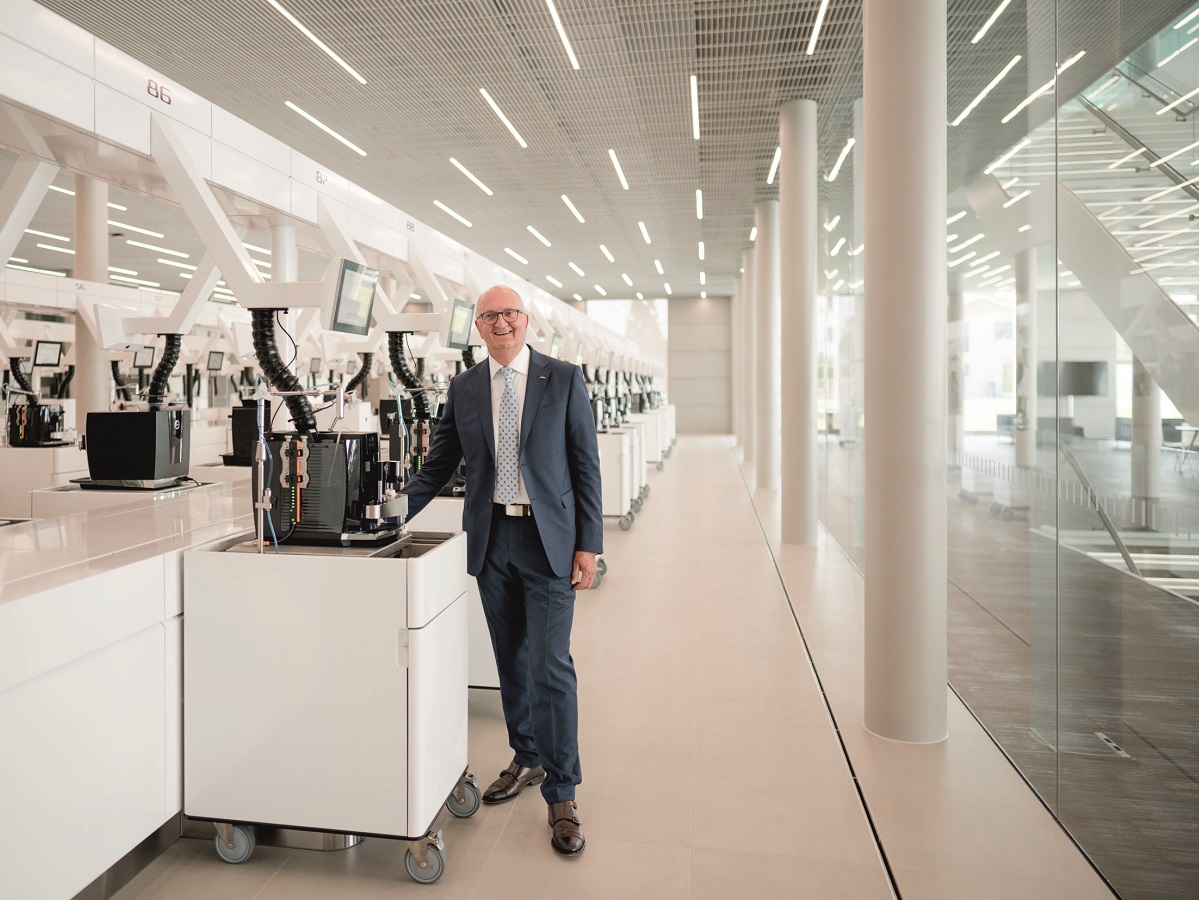Jura is expanding its laboratory capacity at the new Jura Campus in Niederbuchsiten, Switzerland, which was officially opened at the company’s global sales conference in June.
The 5,000 square metre facility represents an investment of CHF 29 million (A$43 million), signaling the company’s commitment to Switzerland as a business location and providing a working environment for approximately 50 employees in research and development.
Investing in the future means strengthening Jura’s three pillars – passion, continuous improvement and uncompromising focus – according to CEO, Emanual Probst.
“That’s why we built the Jura Campus. We intend to remain the innovation leader in automatic specialty coffee machines and bring about a real, sustained increase in the pace of innovation,” he said.
When Jura develops a new coffee machine or makes enhancements to an existing model, it aims to simulate real operating conditions throughout the product’s life cycle as efficiently as possible. During this process, thousands of data records are generated for every single machine.
At the Jura Campus, these processes are digitised. First, the machines are entered into the system and assigned to a trolley, where they will remain throughout the entire development and testing phase. In the space of a few months, Jura engineers examine how individual parts behave after years of use in the home, at 102 fully automated test stations.
The stations have automated supplies of water and coffee beans, and coffee grounds are automatically removed. No waste is produced as a local organic farm composts the coffee grounds and uses the fertiliser on the fields.
A team of approximately 50 employees develop new machines and continuously improve their quality. Functions and data relating to the machines can be accessed in real time, 24 hours a day, by any section involved, whether on site or from a mobile device.
The Jura Campus also incorporates climate conditions with climate rooms that simulate a wide range of operating conditions. “The fully automated endurance testing facility allows us to test our products with two different water qualities, two different types of beans and four different voltages,” Probst explained.

